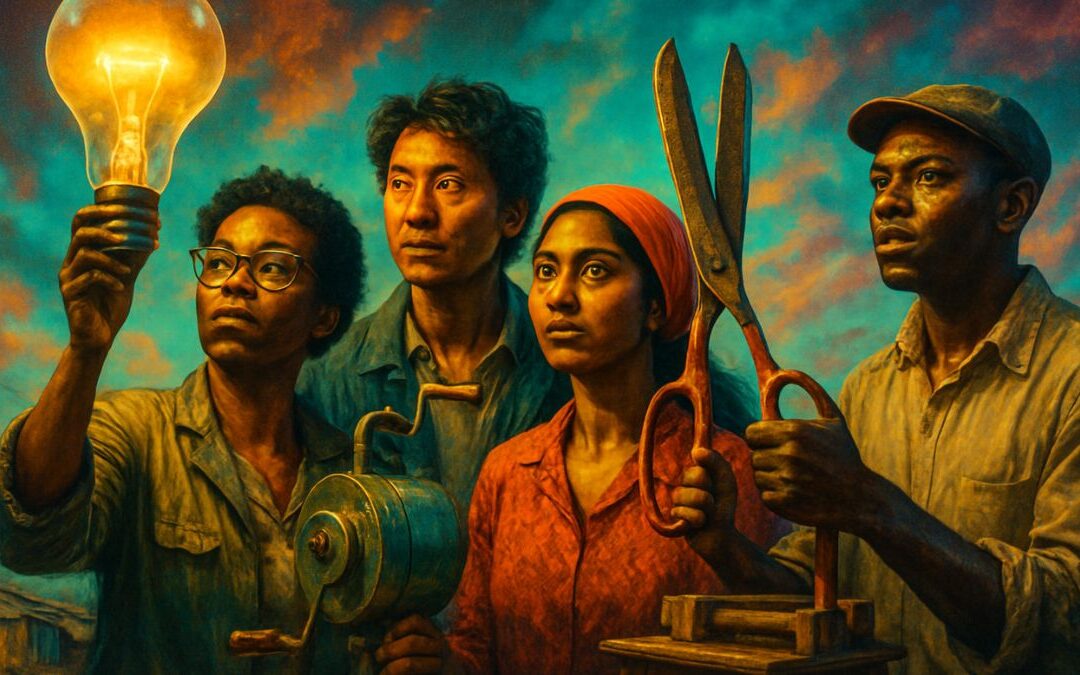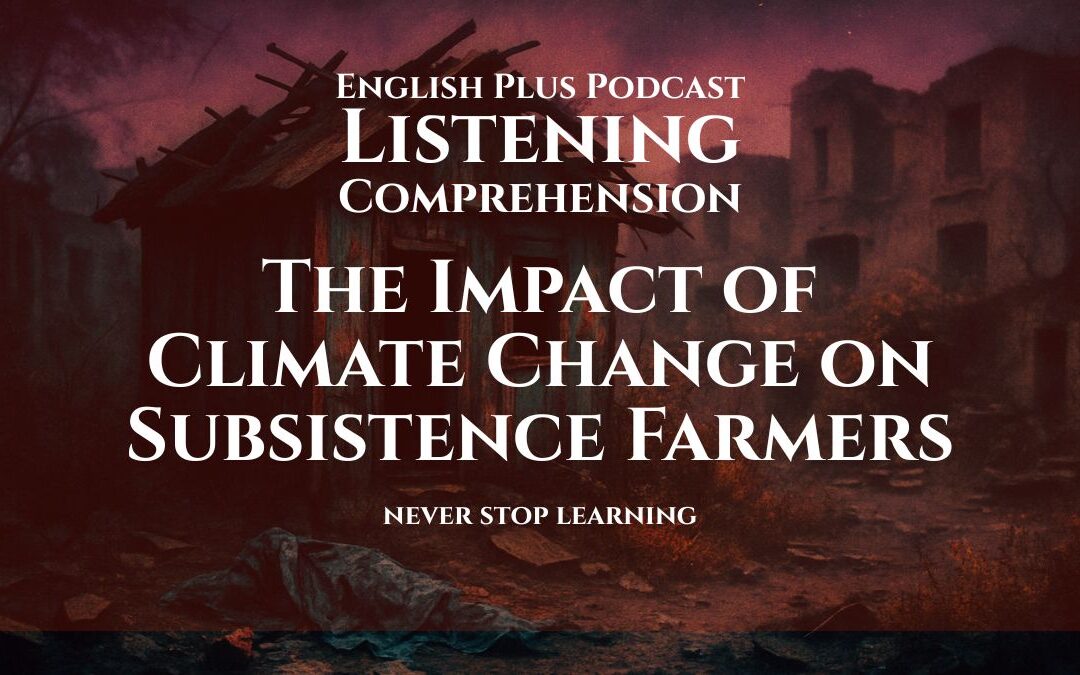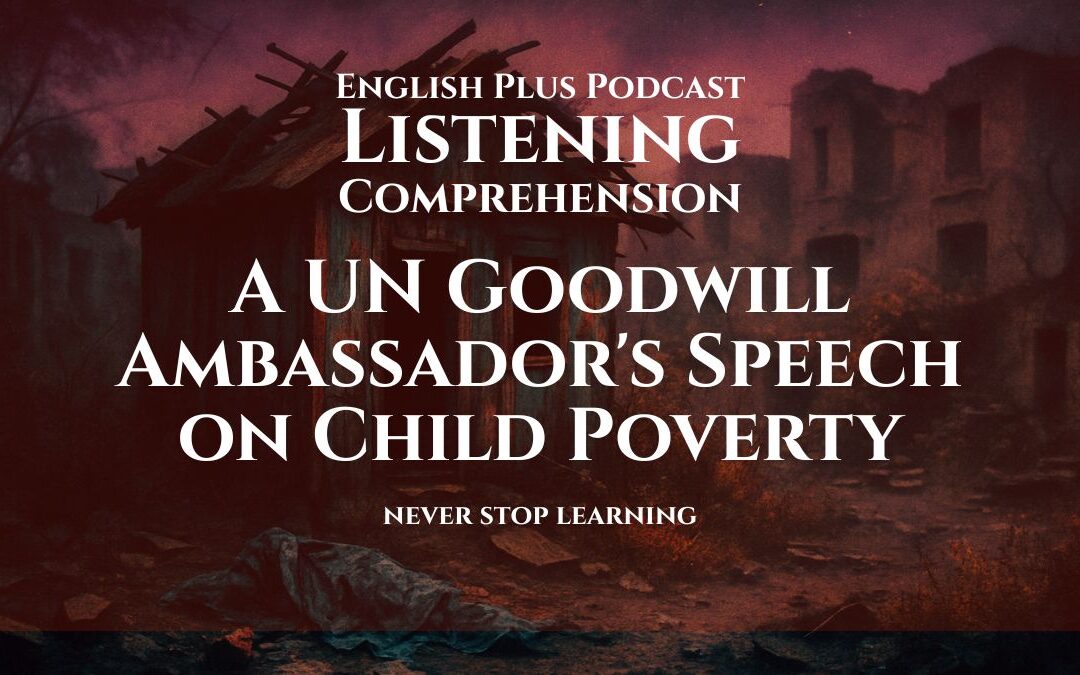Introduction
Learn about the common ISO quality standards and about other standards and frameworks used to measure the quality standards of a company not only from an administrative or technical aspects but from people’s aspects as well.
Audio Episode
Transcript
0:04
Welcome to a new English plus episode. Well, this episode is about business. Yes, business is back on the list. A lot of you have requested those business episodes to come back, and I am answering your calls. And I’m bringing business back on the list. And today in today’s episode, we’re going to talk about quality standards and quality and people. So we’re going to talk about quality in general, because to be honest, that was the last thing I stopped talking about last year when I stopped those business English episodes. And now to continue talking about quality. We’ll talk about quality standards today and quality and people. Now before we start, let me remind you that you can find a lot more on my website English plus podcast.com. The link is in the description, it will take you to the custom post I created for this episode. Now without further ado, let’s start talking about quality standards and quality and people.
1:03
So first, let’s start talking about standards and certification. I’m not gonna lie to you. This is not my favorite part of the episode. The favorite part is quality and people but we have to know about those standards because they’re everywhere. And when we talk about standards, we’re talking about the International Organization for Standardization, which is based in Geneva. And it is a network of national standards Institute’s in over 145 countries working in partnership with international organizations, governments, industry, business and consumer representatives. Of course, you might say what the heck is that the International Organization for Standardization, and you’re telling us that we all know about it? Well, actually you do. It’s the ISO, which you’ve all seen before. Even if you haven’t worked in an organization that has an ISO, you see it all the time on products you buy on a lot of things, so is oh, this is what we’re talking about the International Organization for Standardization, ISO has developed more than 14,000 international standards, which it says are documented agreements containing technical specifications or other precise criteria and guidelines to ensure that materials products processes and services are fit suitable for purpose. Now there are two series of standards for management systems, the ISO 9000, and the ISO 14,000. Let’s start with the ISO 9000, the ISO 9000 series on quality management which gives the requirements for quality management systems the standard for providing assurance about the ability to satisfy quality requirements and to enhance customer satisfaction in supplier customer relationships.
2:46
But the ISO 14,000 series is on environmental management. And that is for organizations wishing to operate in an environmentally sustainable manner. Of course, there are a lot more ISOs. But I chose those two because these are maybe the most popular or the most famous. If organizations want to be certified by ISO they can apply for certification to ISO 9000 and ISO 14,000. These are generic standards that can be applied to any industry. There are also specific standards for particular industries, for example, ISO 90,003, for computing and telecommunications. And there is pretty much a set of standards ISO something with a number obviously, for every single industry there is and now let’s dig in a little bit deeper in ISO 9000, and others ISO 9000 standards puts particular importance on the role of management, the regulatory requirements, the measurable objectives, resource management, monitoring, customer satisfaction, training, effectiveness and continual improvement. Let’s talk about these one by one. So we said that they put particular importance on the first thing is the role of top management in setting policies for quality. top managers have to be seen to be involved in quality issues, not leaving this to middle management. That is one of the standards that has to be met if you want to get this ISO 9000. The second thing is statutory or regulatory requirements. For example, the car industry has to pay particular attention to safety and environmental laws and standards in relation to the components that it uses. So it cannot use anything that’s going to harm the environment. That’s what we call regulatory requirements. And that is one of the things of course, it’s going to be different from one industry to another, but it is there for every industry. And then we have the measurable objectives. We have to be able to measure quality and by how much it is improving. We’re not just going to go like well, I’m going to be better next year. That’s my standard or that’s my objective. Well, how can I ever measure this objective? There’s no way better based on what according to whom the point is, you always have to Come up with smart objectives. Well, we talked about smart objectives before. But to remind you smart objectives, that’s an acronym obviously. And each letter stands for a word. And that is smart. The second word M measurable, your objectives need to be measurable, we have to be able to measure quality, not just say that we’re going to get better, okay. And then we have the resource management, how you manage the inputs to your products, for example, in human resources and materials, there are standards for that as well, monitoring customer satisfaction, customers are the ultimate judges of quality, and we have to constantly check and improve the score that they give us. Yeah, I know, some of you might say customer is king. And it is true in most cases, after all, whatever you’re making, whatever product you’re making, you’re making it so that customers buy it. So if the customers are not happy, that means you’re doing something wrong, or at least you’re manufacturing, or you’re providing the wrong service, something that nobody needs, except for you and a couple of other people. And that is not what you want, that’s not a business, after all, you would want to provide a service people need that’s going to improve their lives in a way, and they need to be happy about it, you need to make sure they are happy about it. So that is why monitoring customer satisfaction is extremely important in ISO 9000. And then we have training effectiveness, the training of your staff is an investment, and you have to measure how effective it is in terms of your future profitability. It’s not just giving them training, you know, some companies, they just give you training and the training is meaningless. And it’s not related to what you do sometimes, or the trainings you do over the year is not coherent. In a way, it’s not trying to improve any specific set of skills, you might need to perform your work better. You have to think your training program through as a manager, of course, or as a company, you have to choose the best training done in the best possible way to improve the skills of your staff, and to give them the skills they need to perform the job better, and maybe to improve their lives as well. Because you know, happy employees are effective employees unless you believe in theory X. But that’s up to you. But anyway, that was about training effectiveness. And finally, we have continual improvement. It’s not just like training, we train them once. And that’s about it. No, you need to continually improve the quality, not only the quality of people, the quality of everything, you cannot hit the mark the first time you try. And guess what not even the 100th time you try every time you make improvements. And every time you find mistakes, and you work on these mistakes, and you improve on them. Until you get to a better product to a perfect product,
7:42
I don’t think you will ever get to a perfect product, there is no perfect product. And technically, if we get to this perfect product, we can stop production after that we can stop working because we already have the perfect product. There’s always room for improvement on all fronts. So here continual improvement 100% quality is never achieved. Let’s face it, and there’s always room for improvement. And by the way, that is what the Japanese called kaizen. continual improvement, there’s always room for improvement kaizen. I hope I’m pronouncing that right. So that was about the first part of our episode quality standards. The second part of our episode, we’re going to talk about quality and people will talk about Investors in People and the E EF QM excellence model. So don’t go away. Stay tuned, and I’ll be right back with you.
8:36
So we’re back to quality and this time we’re going to talk about quality and people. I’m going to talk about two ideas or two things actually Investors in People and the E FQ M excellence model. Let’s start with investors in people. There are models and frameworks that emphasize the human dimension in improving quality Investors in People is a framework developed in the UK, it sets a level of good practice for training and development of people to achieve business goals. It is used by more than 37,000 organizations in the UK and elsewhere. The Investors in People standard is based on four key principles. And these principles are commitment, planning action, and evaluating outcomes commitment that is to invest in people to achieve business goals, planning how skills or individuals and teams are to be developed to achieve these goals action, and that is to develop and use necessary skills in a well defined and continuing program directly tied to business objectives. And finally evaluating outcomes as a result of training and development for individuals progress towards goals the value achieved and future needs. So that is in a nutshell about Investors in People and obviously we can already see that a lot of companies are using that in a way or another. And as I said earlier, sometimes companies have good intentions they really want To invest in people, but they don’t know how. And they don’t follow a standard. And you don’t have to follow a standard, we understand that every company has a different way of doing business have different needs have different kinds of employees, and you have to personalize your experience in a way. And standards might not be the answer to your prayers every
10:18
time. But it’s always a good idea to learn something from these standards, and then customize those standards to fit your business, your company, your specific situation, whatever that is. But if you just go haphazardly training employees, especially if you follow trends, and that is the worst thing, in my opinion, when companies just follow trends. Now, there’s a trend to train our employees to do this. And we have a lot of money. And there’s this famous instructor or famous coach, or whatever, we invite this coach to our company, this coach has no idea what our company does, or how we operate, or our people and how they think and their background, etc, we bring him and he is used to giving this training to 1000s of people, obviously, he or she might be good or bad, who knows. But after all, we just gave them training, very expensive one, but we didn’t think this through, we didn’t make extra efforts to customize this training for us. We’re talking about us as a company, the people their backgrounds, what they need. And sometimes you know if your people need something else, and this other thing might not be that attractive or trendy, but they need it more. So you might want to give them what they need first, and then you can introduce them to those trends and other things. And of course, these things might be useful. I’m not saying that they will necessarily be bad for your company. The whole thing is to have a plan to know what you’re doing. We’re not talking about social media here, right? Anyway, that was about Investors in People. Let’s talk about the second model and wrap up today’s episode, the E F QM excellence model, the EF QM excellence model was developed by EFQ M A nonprofit organization set up by leading European companies to help European businesses make better products and develop improved services through the effective use of leading edge management practices. In the EF QM model, people are very much part of the wider quality picture. The model refers to companies stakeholders, not only its employees, shareholders and customers, but the community as a whole. The model refers to resources policy and strategy, people management leadership and processes our resources, the materials, skills and knowledge used by the firm, the policy and strategy. That’s the firm’s strategies and policies. And by policies, obviously, we’re talking about the actions to carry out those strategies. And this model also refers to people management, the way that employees are managed leadership, the way the organization is LED, and processes how all the above are combined and exploited. Now the five factors that I just talked about that contribute to quality are called enablers. Results are the outcome of the factors that we just talked about. They can be measured in terms of business results, that is the final outcome, which is like the profits made by the firm customer satisfaction, the way customers feel about the firm. And so far, you might say, well, that’s just like everything else. Yeah, I know. But there’s also impact on society that might not be the same like everything else, or every other quality standards. The impact on society is very important the effect of the firm’s product and activity on society. That’s very important. And there’s also another very positive thing included in this model, and that is people satisfaction the way managers, employees, shareholders and other stakeholders feel about the firm that is very important to take into consideration. And with that, we come to the end of this episode. And let me remind you, we talked about quality standards, the ISO, the International Organization for Standardization, we talked a little bit more about ISO 9000. And then we talked about quality and people we talked about Investors in People and the EF QM excellence model. I hope you learned something new and interesting in this episode, and business episodes are bad and they’re here to stay. And with that, we come to the end of the episode. I hope you learned something. I hope you enjoyed your time and this is your host Danny saying thank you very much for listening to another episode from English plus podcast. I will see you next time.
Become a Patron and Unlock Extra Learning Opportunities!
Become a patron on Patreon to unlock many exclusive benefits to take your English and learning to the next level. Check out the many benefits you will get when you become a patron.











0 Comments